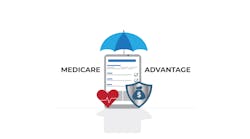The California Advancing and Innovating Medi-Cal (CalAIM) program launched Jan. 1, 2022. Its features are designed to create an easier pathway to support care for people outside of traditional healthcare settings and help address enrollees’ health-related social needs. An online panel of stakeholders recently discussed its potential impact.
Claudia Williams, M.S., CEO of Manifest MedEx, led a discussion of CalAIM’s goals from her perspective leading California’s largest nonprofit health data network.
She noted that CalAIM allows health plans to substitute social services for medical care. For instance, a patient who might be underhoused could have access to housing counseling. “There are going to be a whole bunch of new partners in community-based organizations providing those kinds of social services, whether that's housing or food services or other kinds of services,” she said.
The new program also puts in place a service called enhanced care management. “That's really a care manager on steroids, who's going to be able to really comprehensively support those higher risk individuals, knowing what all of their needs are, doing this social risk assessment, helping make referrals to community-based organizations, and being able to understand the full spectrum of the clinical needs as well,” she said.
Because the program was just launched in January, everyone is running fast trying to get the pieces in place, Williams added. “The biggest initial push was really to get those contracts in place with community-based organizations who we've never worked with in a formal way before. Who are the enhanced care management providers going to be? But as the dust starts to clear, and people look out for the next six and 12 months, one of the next phases of the work is really going to be how do we ensure the right kind of data sharing between those enhanced care management providers and the rest of the clinical team,” Williams said. “Beyond that, what kinds of data sharing will be needed with these social care providers? How do we actually enable data sharing with a much broader spectrum of the community than we've ever had before? It's a very exciting time for all of us. It's also hard, because there's so much to be done that it's sometimes a little bit hard to know where to start.”
Williams then asked other webinar speakers what it is going to take for CalAIM to be successful, not just in the immediate future, but in the longer term.
Dolores Green, M.B.A, is executive director of the Riverside County Medical Association and CEO of the Inland Empire Foundation for Medical Care, and CEO of the Inland Empire Health Information Organization (IEHIO). She responded that one of the first baby steps is getting providers to know their patients. “A provider knows the patients that are in their EHR. They have the information on those patients, but that's not their entire attributed lives,” she explained.
A provider may have a panel of 2,000 patients, but perhaps only 400 of those are in their EHR, because they come in regularly.
“We had a large medical practice here in Riverside. I was talking with one of the physicians and he said, ‘We have 350 homeless in our panel that we had no idea about.’ One of our population health fellows happens to be in this practice,” Green added. “She is now concentrating on that 350-person homeless population that they did not know. Obviously, those patients had not been in to get care. Using Manifest MX, they've been able to track the history of those patients, where they received their care, what emergency rooms have they gone to, looking at even demographic information —last known phone numbers. We know they're homeless, but homeless can be many things, right? Sleeping on somebody's couch or whatever. It's putting pieces together. That's where the HIE has been really helpful for identifying who these patients are, how we might get ahold of them, trying to build a profile, if you will, to begin bringing them into the fold,” Green explained. “One of the hardest things is connecting with some of the patients that are now going to be in the CalAIM program to get them into the fold of healthcare. Since they're being assigned to ECM practices, whether they're private practices or within the county health system, how do we get to these patients? You have to be a detective and utilize every tool that's out there.”
Judi Nightingale, Dr.P.H., R.N., director of population health for Riverside University Health System, said, “Not only do we have a large population of what we call ‘assigned, not seen,’ as Dolores was explaining, there's another factor that I think that HIE is going to be able to help us with,” she said. “When we have patients who are seeking and accessing services from community partners and county partners, sometimes there are five or six people providing different types of care to a single individual. Everybody is asking the patient the same questions. None of us are communicating with each other, even when we work in the county, just in different departments. I think that comes across as a lack of caring, which it truly isn't; it's just that we are not good at the ability to share data with every partner that we have our patients accessing care from.”
Nightingale was enthusiastic about a platform called Connect IE, which allows care managers to see where someone was referred for help with social needs. “I think it's just going to take a little more freeing up of data-sharing ability. I think for a long time we've used HIPAA and 42 CFR as excuses not to treat a whole person as a group of people surrounding that person. And I think we're going to have to get to some better data sharing abilities than what we have currently.”
Williams mentioned a few other things Manifest Medex is working on from the HIE perspective to enable the success of CalAIM. “We realized a couple of years ago that it was really hard to track what services people who might be experiencing homelessness are accessing and how to support them, for instance, after an ED visit. She said they worked with the statewide hospital association to have all hospitals do a uniform way of coding for somebody experiencing homelessness. “That means that the ADT data carries important information about that person's social experience and what they're going through,” she stressed. “We didn't need to implement a new platform or new technology; it was really as simple as all agreeing on a common way of doing something, which I thought was awesome.”
Speaking about race and ethnicity data, Williams said that a comprehensive analysis found that they have race data for about 40 percent of the patients in our in their 30 million records. “We are going out and asking comprehensively how can we be sure we have that that important insight for all for at least 50 percent or more by the end of the year? And we have a lot of very creative strategies we're going about to do that. With many of these questions, the solutions are often very low technology, but they have to do with building on the cross-organizational collaboration. Because we cannot get to these goals without working together and collaborating.”


